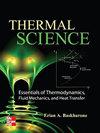人工神经网络辅助下的带余热回收的甲烷供气DIR-SOFC系统多目标优化
IF 1.1
4区 工程技术
Q4 THERMODYNAMICS
引用次数: 0
摘要
本研究的主要目的是提高固体氧化物燃料电池系统的性能。为此,在工程方程求解程序中,设计了具有余热回收的直接内重整(DIR)甲烷燃料电池系统的数学模型。我们使用遗传算法和TOPSIS技术优化了固体氧化物燃料电池的性能,同时考虑了能源、功率和环境分析。在matlab程序中设计了一个与Levenberg-Marquardt训练函数一起工作的人工神经网络,以创建将应用TOPSIS方法的决策矩阵。根据功率优化计算,系统净功率为786 kW。在火用优化中,其火用效率为57.6%。在环境优化方面,确定了环境影响为330.6 kgCO2/MWh。根据多目标优化结果,固体氧化物燃料电池系统的能效、净功率和环境影响分别为504.1 kW、40.08%和475.4 kgCO2/MWh。本文章由计算机程序翻译,如有差异,请以英文原文为准。
Artificial neural network assisted multi-objective optimization of a methane-fed DIR-SOFC system with waste heat recovery
The main purpose of this study is to enhance the performance of solid oxide fuel cell systems. For this purpose, a mathematical model of a direct internal reforming (DIR) methane-fed solid oxide fuel cell system with waste heat recovery was designed in the engineering equation solver program. We optimised the performance of the solid oxide fuel cell using a genetic algorithm and TOPSIS technique considering exergy, power, and environmental analyzes. An ANN working with the Levenberg-Marquardt training function was designed in the MATLprogram to create the decision matrix to which the TOPSIS method will be applied. According to the power optimization, 786 kW net power was obtained from the system. In exergetic optimization, the exergy efficiency was found to be 57.6%. In environmental optimization, the environmental impact was determined as 330.6 kgCO2/MWh. According to the multi-objective optimization results, the exergy efficiency, the net power of the solid oxide fuel cell system, and the environmental impact were 504.1 kW, 40.08%, and 475.4 kgCO2/MWh.
求助全文
通过发布文献求助,成功后即可免费获取论文全文。
去求助
来源期刊

Thermal Science
工程技术-热力学
CiteScore
2.70
自引率
29.40%
发文量
399
审稿时长
5 months
期刊介绍:
The main aims of Thermal Science
to publish papers giving results of the fundamental and applied research in different, but closely connected fields:
fluid mechanics (mainly turbulent flows), heat transfer, mass transfer, combustion and chemical processes
in single, and specifically in multi-phase and multi-component flows
in high-temperature chemically reacting flows
processes present in thermal engineering, energy generating or consuming equipment, process and chemical engineering equipment and devices, ecological engineering,
The important characteristic of the journal is the orientation to the fundamental results of the investigations of different physical and chemical processes, always jointly present in real conditions, and their mutual influence. To publish papers written by experts from different fields: mechanical engineering, chemical engineering, fluid dynamics, thermodynamics and related fields. To inform international scientific community about the recent, and most prominent fundamental results achieved in the South-East European region, and particularly in Serbia, and - vice versa - to inform the scientific community from South-East European Region about recent fundamental and applied scientific achievements in developed countries, serving as a basis for technology development. To achieve international standards of the published papers, by the engagement of experts from different countries in the International Advisory board.
 求助内容:
求助内容: 应助结果提醒方式:
应助结果提醒方式:


